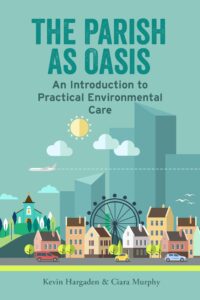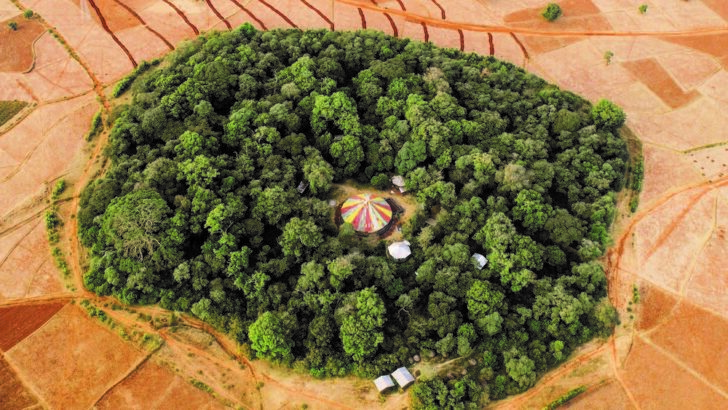The Parish as Oasis: An Introduction to Practical Environmental Care, by Kevin Hargaden and Ciara Murphy (Messenger Publications, €14.95/£12.95)

The very title of this book is enough to startle and attract my imagination as I had been reading a travel account of a journey through Ethiopia, that always troubled land, soon after the overthrow of Haile Selassie (formerly the prince Ras Tafari).
The back cover of the book is illustrated with a remarkable aerial photograph of one of 3,500 so-called “forest churches” that survive in the country (now even more troubled than it was in 1937).
The illustration (pictured) shows a largely arid hard baked landscape in which the circle of the flowering oasis stands out, with an Ethiopian Orthodox church in the centre. Ethiopia’s ancient Christian faith created what has been called “the Zion of Africa”.
Monastic
The monastic culture of Ethiopia has distinct connections with early Christian Ireland, with its small chapels, richly illuminated books, monk filled monasteries cut off from the wider society, and local priests holding ceremonies in churches cut from the living rock.
But this book is less concerned with the civilisation of the past as the human culture of the future. Those African oases are not quite so cut off: trade routes linking them together across the landscape.
There is a lesson to be taken from this: local cultivation of a small area, a series of Edenic gardens all linked together. In that intense local cultivation lies a way to the future perhaps, which seems to be the theme of this splendid little book.
Dr Kevin Hargaden is the Director and Social Theologian of the Jesuit Centre for Faith and Justice. His co-author Dr Ciara Murphy is Environmental Justice Advocate at the Centre.
Evocation
The book falls into two parts. The first part is a brief evocation of the state of the Church in Ireland as it is today, a bit battered and bewildered, but still active. For a moment or two the symbolic image of the oasis is lost sight of in allusions to the Church once dominating the marketplace, though what they really seem to mean is the Roman style Forum.
But it really gets going in the second part, which consists of a set of 20 “experiments”, as the authors call the series of ideas for ways of thinking and acting which each parish and its activists and members can try out for themselves.
These are filled with informative facts. Over recent years we have all been turning our thoughts to ecological notions such as those as promoted by Pope Francis in the hope of saving the climate, and so remaking our outlook on life. Yet oddly the number of large cars on our roads continues to rise. It is this kind of confused thinking that we have to become conscious of and which these “experiments” debate.
Every parish in Ireland should become aware of the ideas and suggestions in these pages. It is a book that will prove well worth the investment. If it can change the outlook of even a few parishes, it will promote those “oases” of life and faith on which the Pope sees the future depending.


 Peter Costello
Peter Costello
